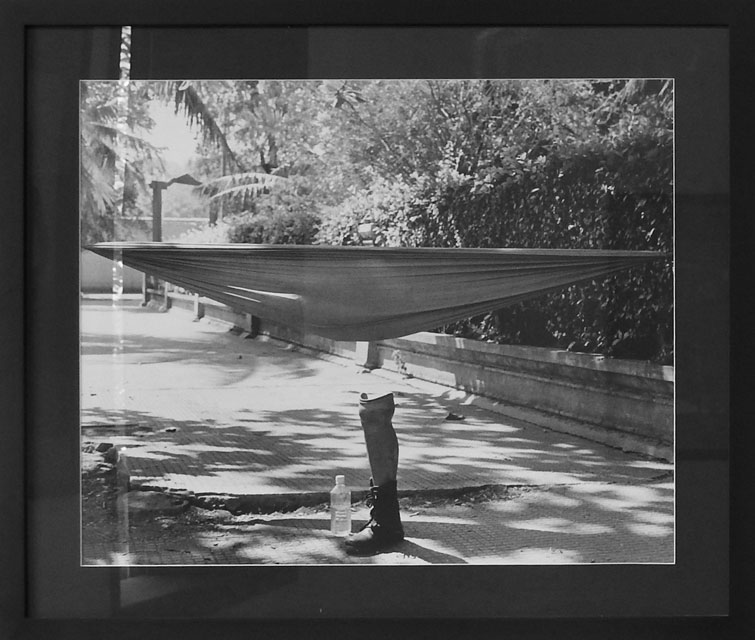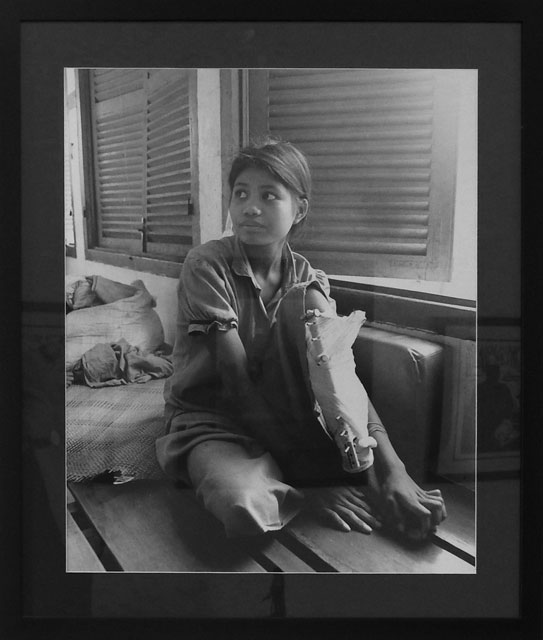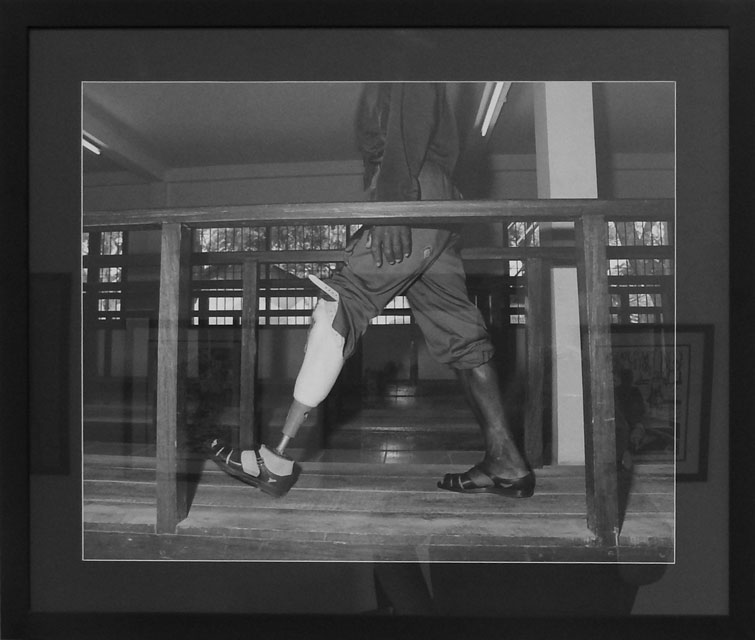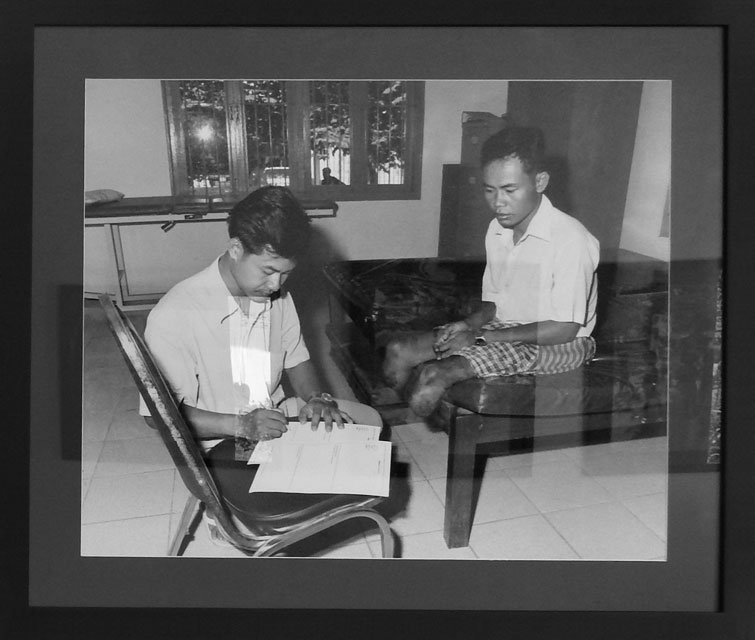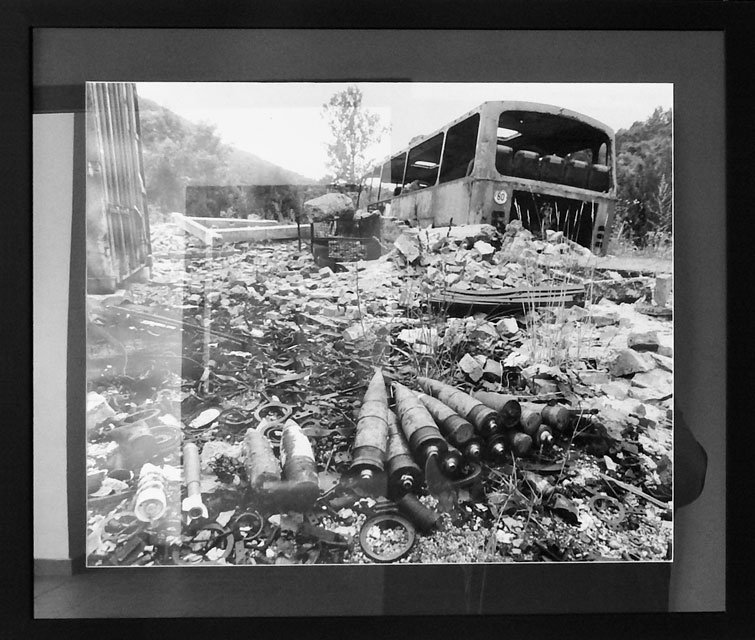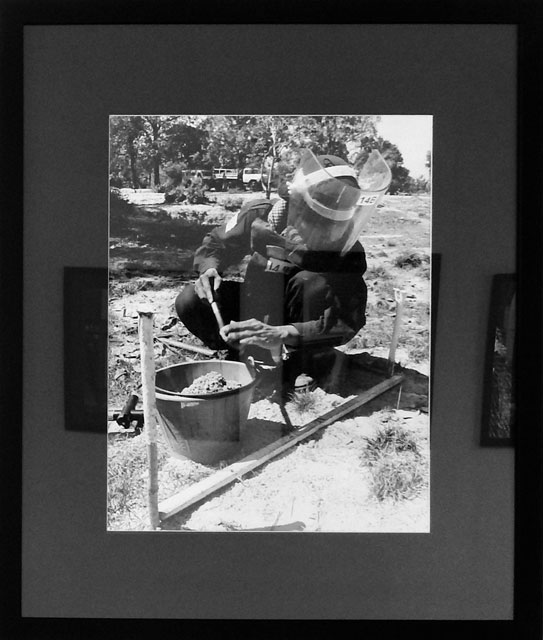Recovery From War
This exhibition room showcases Cambodians’ decades of effort, in recovering from war and rebuilding their families & communities, including a campaign to ban landmines, disarmament program, and peace education initiatives.
We have to educate our people to exercise non-violent problem solving, replacing a culture of violence created over three decades of war, with a new culture of peace.
Huot Thavory, Peace and Disarmament Education Coordinator
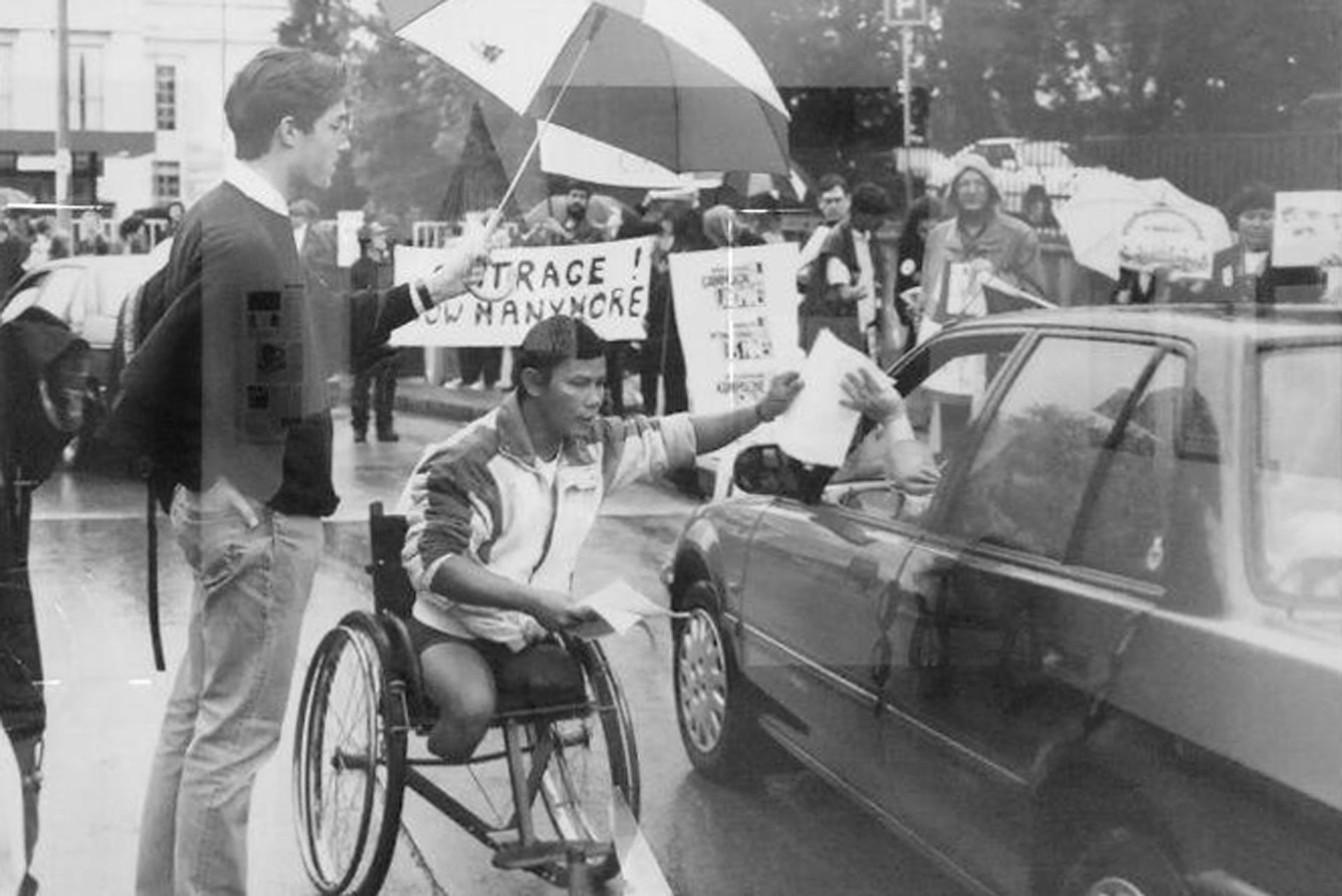
The Cambodia Campaign to Ban Landmines (CCBL) has made significant contributions as part of the International Cambodia to Ban Landmines (ICBL).
“We came to Geneva to put a human face to the mass suffering caused by landmines.”
“The ICBL started a process which in the space of a few years changed a ban on antipersonnel mines from a vision to a feasible reality.”
About These Photos
These photos shot in 1994 and 1995 illustrate the key aims of the Campaign to Ban Landmines – mine awareness, education and clearance; assistance to people injured by mines; and advocacy to ensure the world puts an end to the creation and use of mines.
About The Photographer
John Rodsted was the official photographer to ICBL before and after creation of the Ottawa Treaty, and his photographic skills were recognized when he was a member of the 1997 ICBL Nobel Peace Prize winning team.
“When working towards the ban we were very conscious that good use of images would be essential in educating and ultimately swaying diplomats and politicians to agree with us that a full ban of these weapons was essential.”
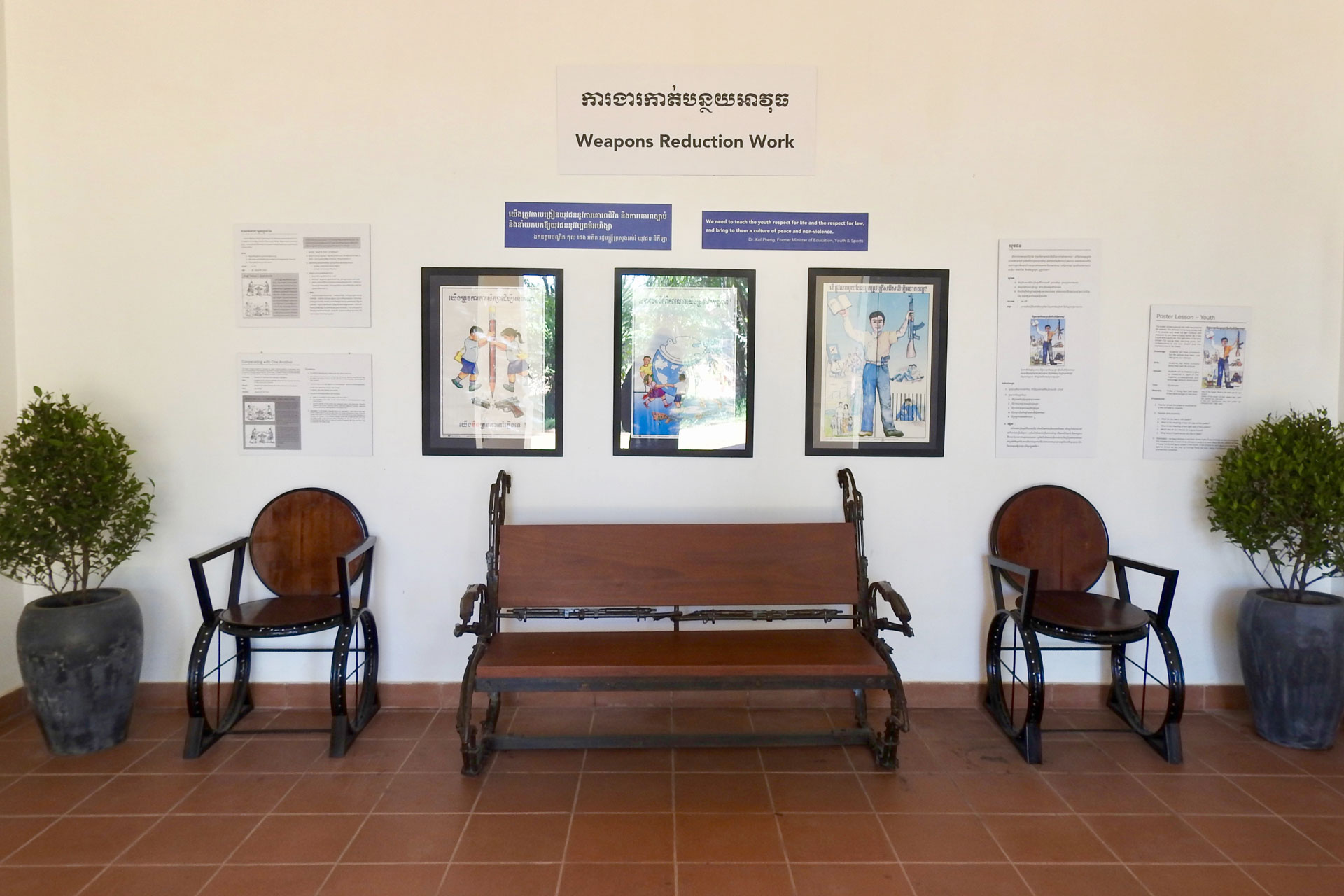
Weapons Collection and Destruction
“Weapons for Development” Scheme:
The Weapons for Development Scheme was designed to encourage gun owners to turn in their weapons for the benefit for the whole community. The strategy was to reduce the monetary value of weapons by granting compensation for surrendered weapons, and to strengthen trust and shared ownership within the community.
Development organisations then funded projects, such as construction of wells and schools, based on the number of weapons collected. EU-ASAC, J-SAC and the United Nations Development Program (UNDP) were key partners of the Cambodian Government in weapons collection.
Flames for Peace:
Weapons were destroyed in public ceremonies called “Flames for Peace”. They were held in 50 towns that had the most guns. These public ceremonies symbolically acknowledged that community members had chosen peace over weapons.
Peace & Disarmament Education Project:
“We have to educate our people to exercise non-violent problem solving, replacing a culture of violence created over 3 decades of war, with a new culture of peace.” (Huot Thavory, Peace and Disarmament Education Coordinator).
The Peace Education Project was committed to training teachers and introducing a curriculum that emphasized participation, community building, and trust and connection skills.
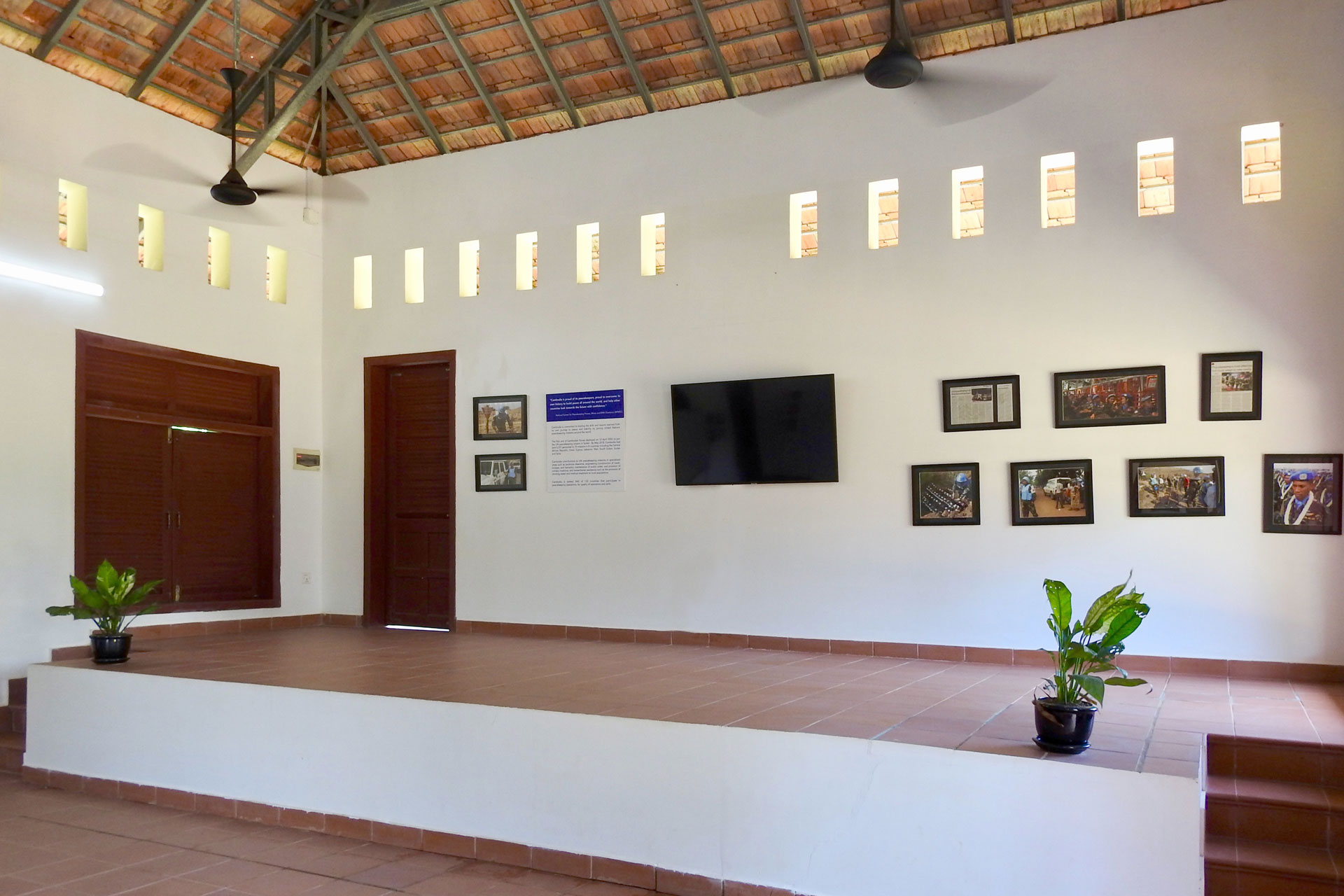
Cambodia is committed to sharing the skills and lessons learned from its own journey to peace and stability by joining United Nations peacekeeping missions around the world.
“Cambodia is proud of its peacekeepers, proud to overcome its own history to build peace all around the world, and help other countries look towards the future with confidence.” (National Center for Peacekeeping Forces, Mines and ERW Clearance NPMEC).
The first unit of Cambodian forces deployed on 12 April 2006 to join the UN peacekeeping mission in Sudan. In November 2018, Cambodia has sent 5,546 personnel to 10 missions in 8 countries including the Central African Republic, Chad, Cyprus, Lebanon, Mali, South Sudan, Sudan and Syria.
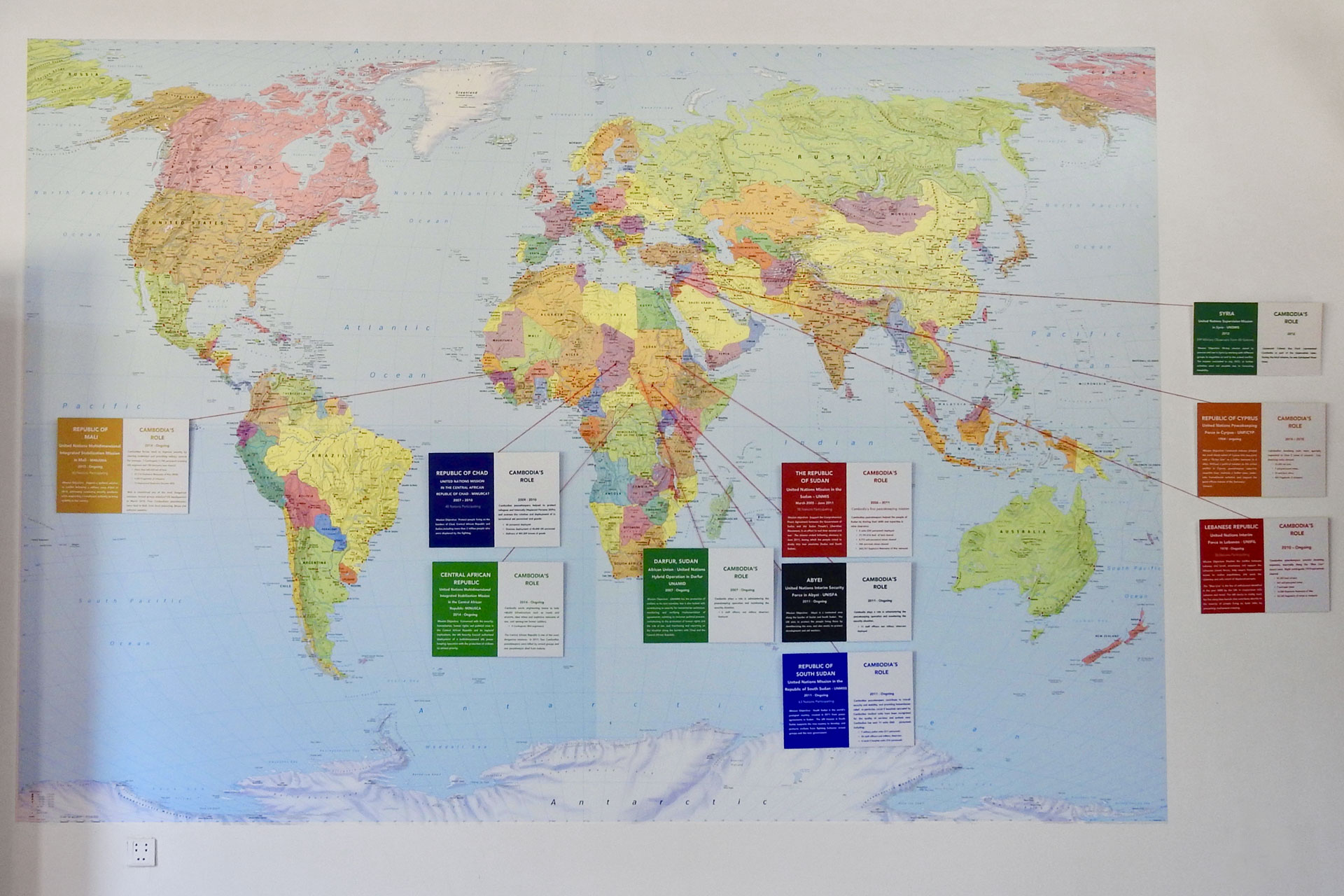
Cambodia contributions to UN peacekeeping mission in specialized areas such as landmine clearance, engineering & construction, maintenance of public order, provision of military medicine, and humanitarian assistance.
In 2018 Cambodia was ranked 29th of 122 countries that participate in peacekeeping operations, for quality of operations and skills as well as number of troops committed. It is ranked 17th for most women to participate in peacekeeping missions.
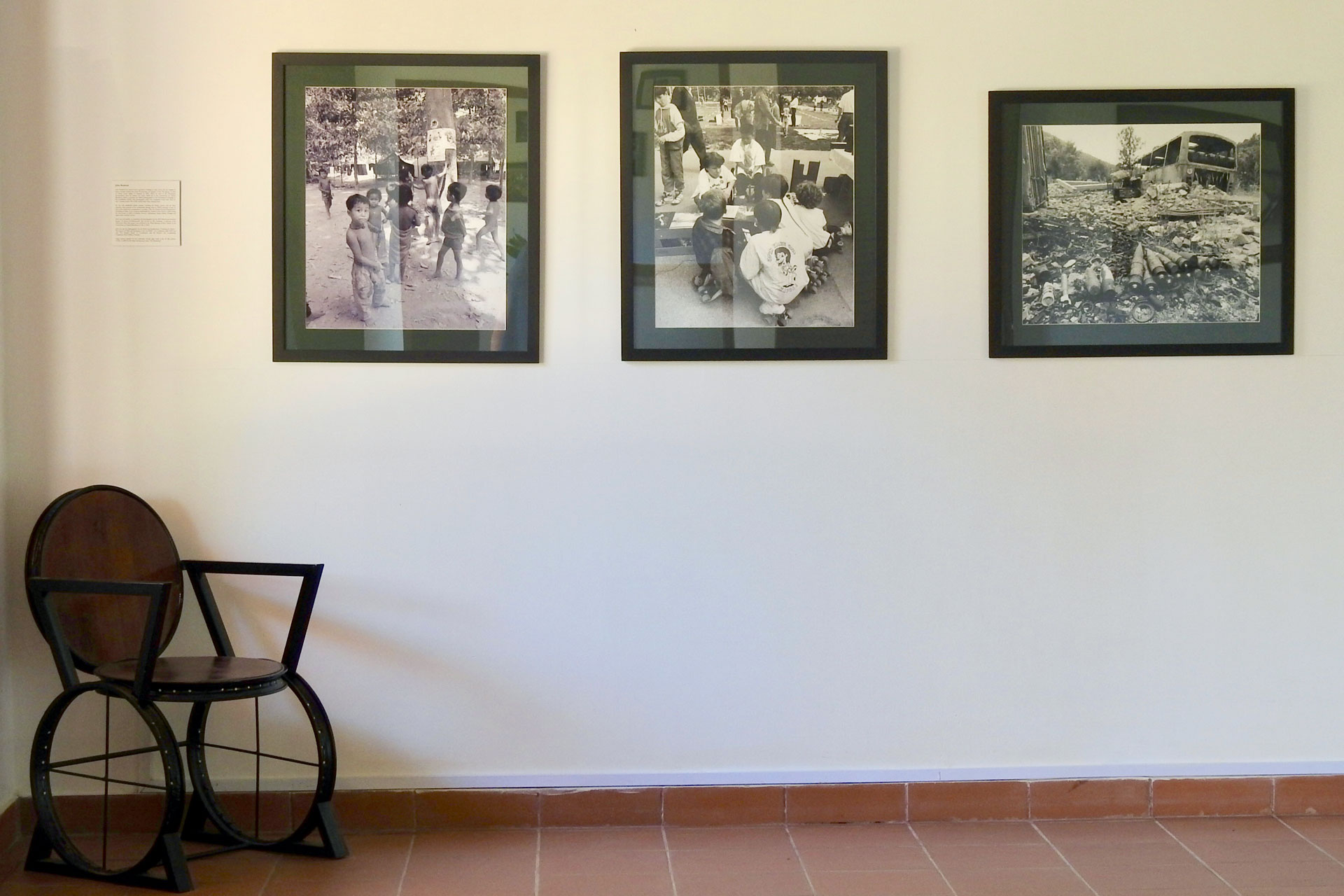
These photos shot in 1994 and 1995 illustrate the key aims of the Campaign to Ban Landmines – mine awareness, education and clearance; assistance to people injured by mines; and advocacy to ensure the world puts an end to the creation and use of mines.
